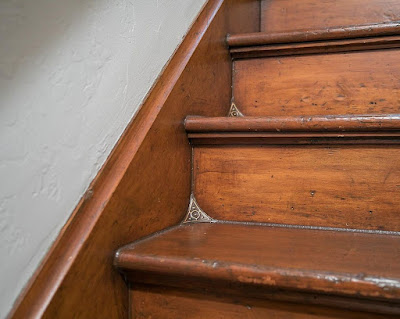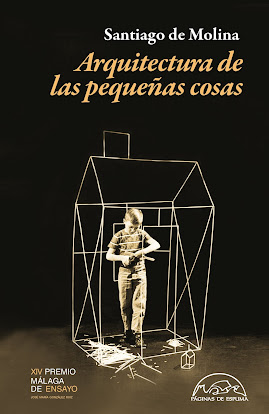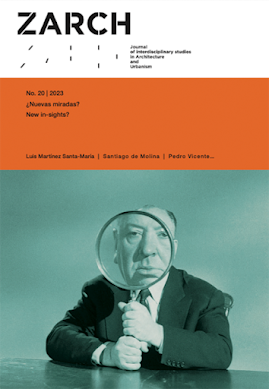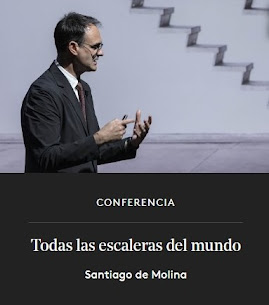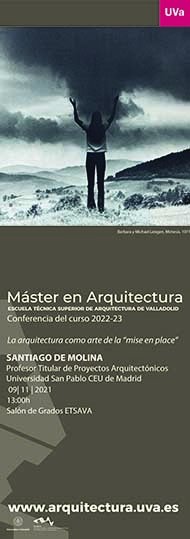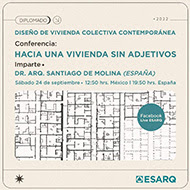En un
tiempo de mascaradas, donde la imagen del cangrejo ermitaño se ha convertido en
totémica, cambiamos de carcasa sin los complejos que tuvieron generaciones
anteriores. En la época de los implantes de silicona y de las liposucciones, el
conflicto entre la apariencia de las cosas y su real contenido ha sido anestesiado
hasta que ha dejado de doler. Cuando el filtro de una red social es capaz de cambiar
nuestro aspecto, engordar nuestros labios, pixelar las patas de gallo y devolvernos
la imagen de una lozanía que nunca tuvimos, no es de extrañar que suceda lo
mismo en otros ámbitos de la vida.
Mientras
la cirugía, las estanterías de autoayuda y los gimnasios hacen su agosto, la arquitectura,
que tiende a resistirse a los cambios, inevitablemente acaba imbuida por los
signos de los tiempos. Aunque en esta ocasión, y sin que sirva de precedente,
esta vieja disciplina había tratado con la realidad de la apariencia hueca (o
prestada) desde mucho antes. Ese debate, de hecho, llegó a constituirse en un fenómeno
con nombre propio: fachadismo. Se aludía con ello a la obscena rehabilitación
de un edificio en la que solo se conservaba el caparazón, vaciando el interior
de su uso y su forma. El desprecio gremial hacia el fachadismo fue, ante todo,
de orden moral. Era considerada una práctica indecente y puramente posmoderna
porque demolía la coherencia de la forma. Aunque fuese, en realidad, su
epígono. En su extremo, resultaba más brutal que el brutalismo y más minimalista
que el minimalismo.
Gracias
a este fenómeno, ciudades enteras conservaron el aspecto de sus calles y plazas
mientras que de ventanas adentro, tuvieron aire acondicionado y espacios libres
de muros. Las normativas protegían las fachadas mientras que los inversores
podían rentabilizar su negocio inmobiliario sin tener que dar explicaciones
formales al vecindario sobre el aspecto de la nueva edificación…
Sin
embargo a menudo se olvida que el fachadismo, todo fachadismo, tiene su reverso.
Un reverso que parece estar libre de conflictos y que se aproxima al mundo
actual de las redes, los trasplantes de pelo y las cirugías de doble mentón. El
cambio de la carcasa puede actualizar el interior y dotarlo de nueva vida. Las
sucesivas fachadas adosadas sin fin a las catedrales románicas, góticas y
renacentistas, el Pallazo della Ragione en Vicenza, de Andrea Palladio y los
esfuerzos sucesivos por adosar una fachada a San Petronio en Bolonia, la basílica
de Santa Justina en Padua, o la de San Lorenzo, en Florencia, acuden a la mente
para ejemplificar otra forma de fachadismo, paradójicamente, menos vilipendiada...
Hoy que el fachadismo se ha
extendido a todos los ámbitos de la vida, conviene no olvidar que es un
fenómeno llamado a pervivir. El darwinismo arquitectónico no existe. Porque en
la arquitectura, como en la ciudad, como en las redes sociales, todo es artificial.
Precisamente porque lo artificial es lo propio
del ser humano.
In a
time of masquerades, where the image of the hermit crab has become totemic, we
change our shells without the self-consciousness of previous generations. In
the age of silicone implants and liposuctions, the conflict between appearance
and reality has been numbed until it no longer hurts. When a social media
filter can alter our looks, plump up our lips, blur away crow's feet, and
return an image of youthfulness we never had, it's no surprise that similar
phenomena happen in other areas of life.
While
plastic surgery, self-help books, and gyms make a killing, architecture,
which tends to resist change, inevitably ends up imbued with the signs of the
times. However, in this case, and without setting a precedent, this ancient
discipline had already dealt with the reality of empty or borrowed appearances
long ago. That debate, in fact, became a phenomenon with its own name:
façadism. It referred to the obscene restoration of a building in which only
the outer shell was preserved, while the interior was emptied of its function
and form. The guild's disdain for façadism was primarily moral. It was
considered an indecent and purely postmodern practice because it demolished the
coherence of form. Although it was, in reality, its epigone. At its extreme, it
was more brutal than brutalism and more minimalist than minimalism.
Thanks
to this phenomenon, entire cities retained the look of their streets and
squares while indoors, they had air conditioning and spaces free of walls.
Regulations protected the facades while investors could profit from their real
estate business without having to give formal explanations to the neighborhood
about the appearance of the new building...
However,
it is often forgotten that façadism, all façadism, has its reverse. A reverse
that seems free of conflicts and approaches the current world of social
networks, hair transplants, and double chin surgeries. Changing the shell can
update the interior and give it new life. The successive facades attached
endlessly to Romanesque, Gothic, and Renaissance cathedrals, Andrea Palladio's
Pallazo della Ragione in Vicenza, and the successive efforts to add a facade to
San Petronio in Bologna, the Basilica of Santa Justina in Padua, or San Lorenzo
in Florence come to mind to exemplify another form of façadism, paradoxically,
less vilified...
Now that façadism has spread
to all areas of life, it is worth remembering that it is a phenomenon destined
to survive. Architectural Darwinism does not exist. Because in architecture, as
in the city, as in social networks, everything is artificial. Precisely, because the
artificial is characteristic of the human being.


